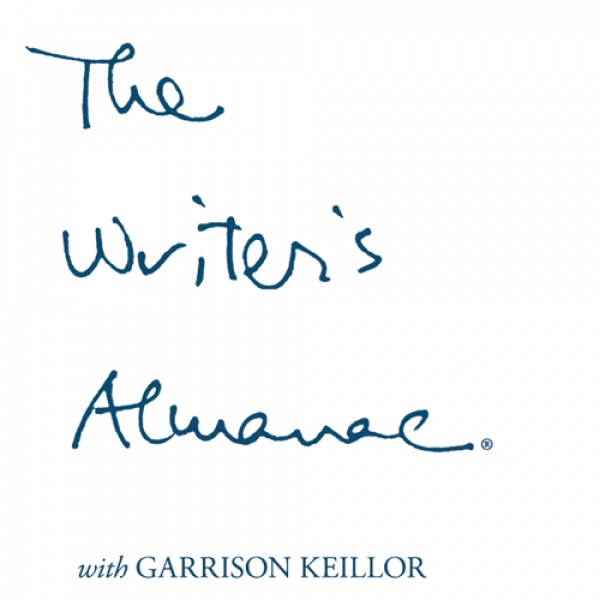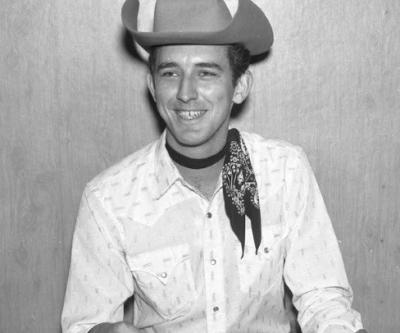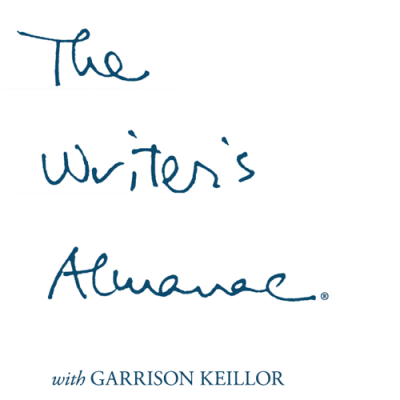December 20, 2018
Tuesday
8:00 p.m.
Minneapolis, MN
Test schedule
A live performance with Robin and Linda Williams at the Cedar Cultural Center
May 20, 2018
Sunday
3:00 p.m.
Lexington, MA
Lexington, MA
A live performance at the Saenger Theatre
April 10, 2018
Tuesday
8:00 p.m.
Tulsa, OK
Tulsa, OK
A live performance at the Brady Theater
March 17, 2018
Saturday
8:00 p.m.
Long Beach, CA
Long Beach, CA
A live performance at the Carpenter Performing Arts Center
March 15, 2018
Thursday
7:00 p.m.
Mobile, AL
Mobile, AL
A live performance at the Saenger Theatre
“The Old Oaken Bucket” by Samuel Woodworth, from The Old Oaken Bucket. Public domain. (buy now)
How dear to this heart are the scenes of my childhood,
When fond recollection presents them to view!
The orchard, the meadow, the deep tangled wildwood,
And every loved spot which my infancy knew;
The wide-spreading pond, and the mill that stood by it;
The bridge and the rock where the cataract fell;
The cot of my father, the dairy-house nigh it,
And e’en the rude bucket which hung in the well!
The old oaken bucket, the iron-bound bucket
The moss-covered bucket which hung in the well.
It was on this day in 1942 that Anne Frank (books by this author) was given a small red and white diary as a gift for her 13th birthday. She named her diary “Kitty,” and for more than two years she recorded her thoughts and experiences in it.
She was born in Frankfurt on this day in 1929, and when she was four the Nazis won elections in Frankfurt, so Anne and her older sister Margot and their parents moved to Amsterdam. Anne’s father, Otto, worked for a company that sold fruit pectin. A few years later, he started his own company that sold spices, salt, and other foods wholesale to make sausages.
Until she was 11, Anne’s life was relatively normal. But in 1940, Germany invaded the Netherlands, and anti-Jewish decrees became the norm. Jews had to wear yellow stars, go to special schools, and couldn’t go to the movies or the swimming pool. And Jews started being called up for “work camps.” The Netherlands was an especially difficult country to escape from, because the only neighboring countries were Germany and Belgium, which was also occupied.
On this day in 1942, Anne began her diary, writing about all the things that she wasn’t allowed to do because she was Jewish. About a week after her birthday, on June 20th, she wrote: “Writing in a diary is a really strange experience for someone like me … because it seems to me that later on neither I nor anyone else will be interested in the musings of a 13-year-old schoolgirl. Oh well, it doesn’t matter. I feel like writing, and I have an even greater need to get all kinds of things off my chest. […]
A couple of weeks later, on July 5, 1942, Anne’s sister, Margot, received a notice that she had to report to a Nazi work camp. If she didn’t, the whole Frank family would be arrested. The next day, Anne’s parents brought the family into hiding in an annex above her father’s office. A week later, another family of Jews joined them, and a few months later, another man. Altogether, there were eight people living in a space of about 500 square feet. They had to be very quiet during the day, which was hard for such a lively teenager as Anne, and she ended up writing in her diary almost daily.
They were in the annex for 25 months. In March of 1944, the people in the annex heard a Dutch radio broadcast out of London in which the Cabinet Minister said that after the war the Dutch government would collect diaries and documents to preserve a record of the war in the lives of ordinary people. Anne decided that her diary was important, and that she might even turn it into a novel. She started going back through and revising it, rewriting it all in longhand, correcting parts she thought were too immature, personal, or poorly written.
In August of 1944, someone notified the German Security Police that there were Jews hiding in the annex. Only four of Otto’s former employees knew about the hiding place — it was these few people who had been supplying them with food and news of the outside world for two years. But there were probably many more people who suspected something — acquaintances, other employees, the grocer. To this day, no one knows who betrayed the Franks and the other people in the annex. Everyone was arrested and taken to Auschwitz. Anne and Margot ended up in Bergen-Belsen, where they both died of typhus in February of March of 1945, just a few weeks before the camp was liberated by the British. Anne was 15 years old. Of the eight people who had lived together, only Otto Frank survived the concentration camps.
One of the people who had helped the Franks, Otto’s former secretary Miep Gies, had found Anne’s diary after the arrest and saved it. She gave it to Otto. He didn’t want to publish it, feeling it was too personal, but many of his friends thought that Otto should publish the diary, especially since that was Anne’s hope for it. So he agreed, and it came out in June of 1947. Otto continued to work for human rights, and he personally answered thousands of letters from people who read Anne’s diary and were affected by it.
Miep Gies spent the rest of her life working with the Anne Frank House and promoting Anne’s story, traveling the world and lecturing while she was in her 80s. She died at the age of 100.
The novelist Francine Prose wrote Anne Frank: The Book, The Life, The Afterlife (2009), in which she said: “The diary is beautifully orchestrated — the way she alternates dramatic scenes with reflections, the incredibly vivid characterizations of the eight people, how each one handles the problem of how to take a bath or peel potatoes. Her naturalness of tone, the sense of spontaneity, it’s very hard to do. She was an artist, that’s the bottom line.”
It’s the birthday of Brigid Brophy (books by this author), born in London (1929). When she was 24, she wrote Hackenfeller’s Ape (1953), about a zoologist who becomes attached to the apes he is supposed to observe objectively. She wrote many more novels, including The King of a Rainy Country (1956) and Palace Without Chairs (1978). She campaigned for the rights of women, animals, and prisoners, even while she was sick in bed with multiple sclerosis at the end of her life. She said, “Whenever people say, ‘We mustn’t be sentimental,’ you can take it they are about to do something cruel. And if they add, ‘We must be realistic,’ they mean they are going to make money out of it.”
It’s the birthday of novelist and priest Charles Kingsley (books by this author), born in Holne, England (1819). He is best remembered for his children’s book The Water-Babies (1863). It was an allegorical story written to teach Christian values, and he wrote in a letter to a friend: “I have tried, in all sorts of queer ways, to make children and grown folks understand that there is a quite miraculous and divine element underlying all physical nature, and nobody knows anything about anything, in the sense in which they may know God in Christ, and right and wrong. And if I have wrapped up my parable in seeming Tomfooleries, it is because so only could I get the pill swallowed by a generation who are not believing with anything like their whole heart, in the living God.” The “tomfooleries” were elaborate—The Water-Babies might have been Christian propaganda, but it was also a strange and enjoyable fairy tale. It is the story of a 10-year-old chimney sweep named Tom. He falls through a chimney into the room of a wealthy young girl, and when he is discovered there he is chased out of town, until he gives in to thirst and weakness and falls into a river and drowns. Fairies turn him into a creature called a “water-baby,” which is 3.87902 inches long and has gills. He is guided by Mrs. Bedonebyasyoudid, Mrs. Doasyouwouldbedoneby, and various fairies in his journey to the Other-End-of-Nowhere, where he has to rescue the cruel Mr. Grimes, his former master.
The Water-Babies was extremely popular when it was published, and it helped drum up public support for the Chimney Sweepers’ Regulation Act, which made it illegal for adult chimney sweep masters to force child laborers to climb chimneys.
Charles Kingsley wrote: “I am not fond, you know, of going into churches to pray. We must go up into the chase in the evenings, and pray there with nothing but God’s cloud temple between us and His heaven! And His choir of small birds and night crickets and booming beetles, and all happy things who praise Him all night long! And in the still summer noon, too, with the lazy-paced clouds above, and the distant sheep-bell, and the bee humming in the beds of thyme, and one bird making the hollies ring a moment, and then all still — hushed — awe-bound, as the great thunderclouds slide up from the far south! Then, there to praise God!”






